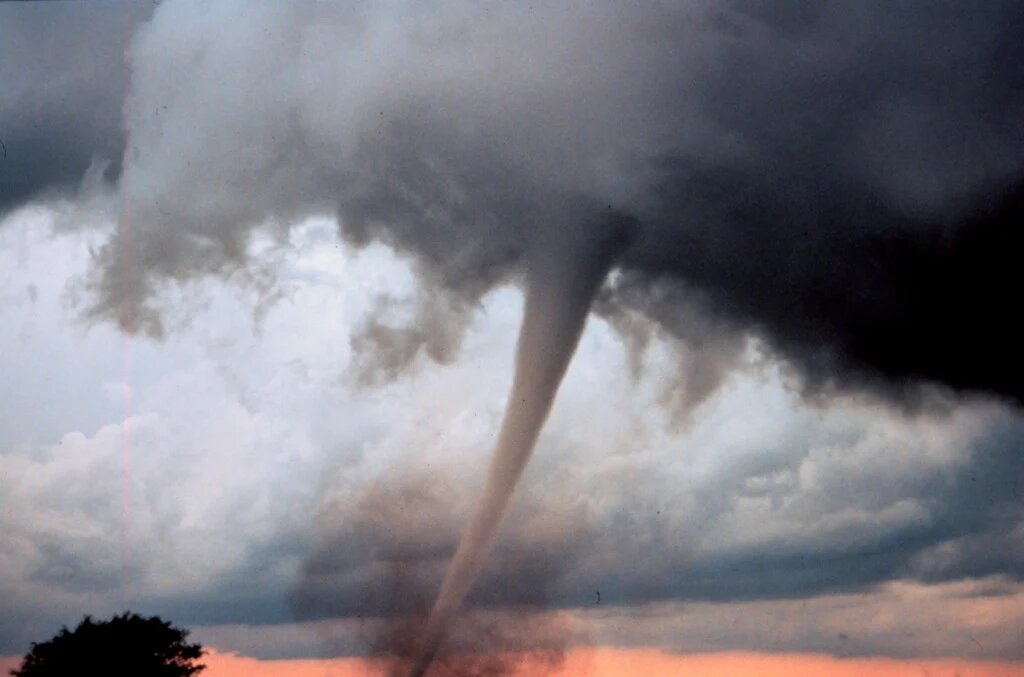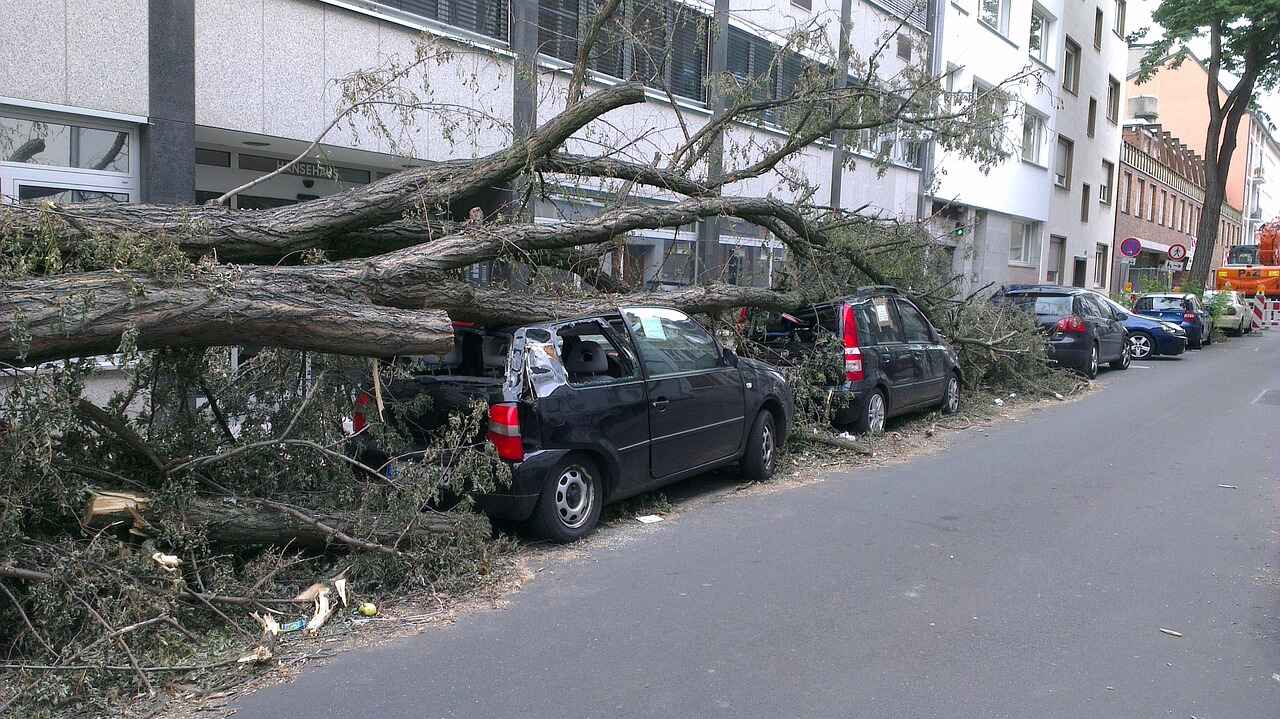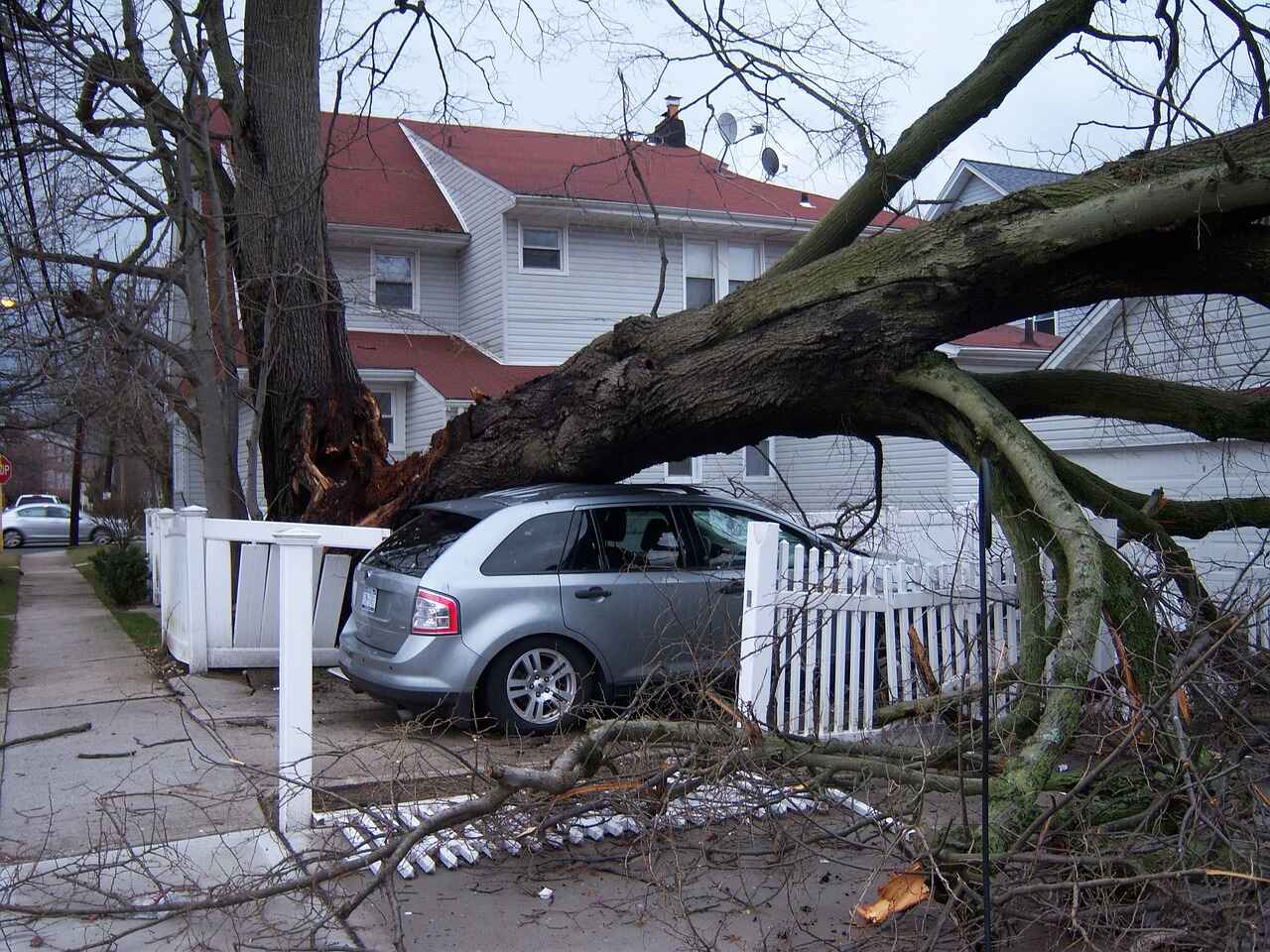Introduction
Hurricane vs Tornado: These two powerful storms can both be fascinating and terrifying. Whether you’re in an area prone to them or not, it’s important to understand the differences between hurricanes and tornadoes. This article will go into detail about the formation, characteristics, destructive power, preparation, warning systems, and aftermath of these natural disasters.
When it comes to hurricanes and tornadoes, they are in fact both terrible. Just because they share that similarity doesn’t mean there aren’t plenty of differences between them. In this article we’re going to look at all sorts of factors such as formation, size, duration, wind speeds, frequency and advanced warning. We’ll take a hard look at these meteorological monsters together so that we can better appreciate their uniqueness and also enhance our preparedness for them.
See also: When is Tornado Season?
Understanding Hurricanes and Tornadoes
Hurricanes and tornadoes are two different natural disasters that have opposing formations but arise from similar weather conditions. Hurricanes begin over warm ocean waters near the equator. The warm air rises from above the oceans surface which leaves an area with low pressure underneath. More air is then drawn into this specific low-pressure spot causing it to start rotating due to Earth’s rotation; therefore creating the famous hurricane spiral shape. They’re massive storms that can form hundreds of miles in diameter.
Tornados on the other hand are rapidly rotating columns of air that extend from a thunderstorm to touch ground level. Another name for tornados is twisters because when they appear they have a twisting funnel-like shape. Twisters occur usually within minutes once a particular storm starts growing fast enough whereas hurricanes could last days if not weeks but still only cause slight damage compared to what a tornado could do in just seconds.
In order for us to better understand these two natural disasters we need to study their behavior which stems from how they were formed.
Geographical Location
Hurricanes are typically located in the tropical zone and love warm waters so they’re mostly seen in the Atlantic and Pacific oceans. Tornados however have been spotted on all continents except for Antarctica but there’s a lot of them in the United States.
Characteristics and Varieties – Hurricane vs Tornado
Tornados come in many different shapes and sizes, with their general look appearing as a large funnel that’s close to the ground. If it has a cylindrical profile then it’s called stovepipe tornado, if it appears as a large wedge then its wedged tornadoes, if its small and looks like it’s just messing up some dust then its “rope tornado.” A single funnel can also appear to be multiple different funnels by having vortices within itself. Some other types of tornados include: multiple vortex, waterspout, gustnado, dare devil, fire whirls, and steam devils.
The color of twisters depends on which region they were formed but considering they’re filled with debris most of them end up looking gray or white. However when a twister doesn’t have much debris in it yet its still causing damage then you’ll see that show through by its color which could be red or even blue. And ones that form within mountainous snow-covered regions usually tend to look more white than anything else.
Hurricanes take form over ocean waters that are warmer than 26.5°C because this is when they start drawing heat from the ocean surface at high-speeds to create enough moisture within themselves.
As a result they rapidly weaken over land and cold waters, lacking the necessary heat and moisture. The low-pressure centers of hurricanes, known as the “eye,” are warmer than their surroundings and are encircled by strong winds and rain in the “eye wall.” Hurricanes have no fronts, and their peak season in the Atlantic basin is from mid-August to late October.

Wind and Rain
The strong winds of tornadoes can blow away houses; this, however, is not their primary destructive force. Instead it is their rapidly rotating wind speeds exceeding 330 km/h (200 mph) that cause most fatalities. Tropical cyclones release 250 times more energy than all the world’s power stations combined each second! Hurricane Andrew (1992) killed 44 people directly (26 in Florida), left between 160,000-250,000 homeless in south Florida alone, caused an estimated $30 billion ($66 billion adjusted for inflation) in damage.
Winds over 119 km/h (74 mph) may cause minor structural damage to buildings with poorly constructed foundations. Winds over 179 km/h (111 mph) may cause extensive damage to buildings with weak exteriors. Both of these types of storms can also produce heavy rains that often lead to flooding.
Supercell thunderstorm near Deming, New Mexico on August 24th.
Tornado – National Weather Service – Norman forecast office
Formation
Tornadoes require significant vertical shear of the horizontal winds (i.e., a change in wind speed or direction with altitude); tropical cyclones require little tropospheric vertical shear — less than about 10 m/s (20 kt, 23 mph)—to form or strengthen.
Temperature Gradient
Tornadoes occur where there is a large temperature gradient; conditions around tropical cyclones have almost zero horizontal temperature gradient. Thus tornadoes occur mainly over land where solar heating creates temperatures contrasts whereas tropical cyclones are mostly an oceanic phenomenon. Hurricanes lose energy after landfall because they no longer have the necessary moisture available. Along the coast, residents can expect to feel hurricane-force winds about 3 times per century.
Rotation
In the Southern hemisphere hurricanes and tornadoes rotate clockwise; in the northern hemisphere they rotate counterclockwise.
Frequency and Detection of Hurricanes and Tornadoes
There are five or six hurricanes in the Atlantic Ocean each year; many of these form in the Caribbean. A series of low-pressure systems develop off the West coast of Africa and traverse the Ocean.
Most of these systems do not become tropical storms; most tropical-storm strength systems do not become hurricanes. The Caribbean hurricane season (June 1-November 30) sees most hurricane activity during August and September. On average, about nine tropical storms form each year with five becoming hurricanes.
According to the National Hurricane Center, there were at least 385 known hurricanes in Caribbean waters between 1494 and 1900.
United States
The United States experiences roughly 1,200 tornadoes annually — more than any other place on Earth. The Netherlands has a high number of tornadoes compared to its area; South Africa, Paraguay, parts of Argentina, parts of Europe, Australia and New Zealand also record significant numbers. Tornadoes are less common during winter months.
Detection
Pulse-Doppler radar is used to detect both tornadoes and tornado signatures associated with supercell thunderstorms that may produce tornadoes.
Photogrammetry is used to locate small objects lofted by a storm or swirling around within it such as small debris or even raindrops.
Ground swirl patterns may be examined for evidence if a tornado touched down in an area without causing damage to vegetation or objects. Trees and shrubs are not always uprooted, but their leaves may be stripped off.
Since its inception, the National Hurricane Research Project has worked to develop technology for hurricane reconnaissance and tracking. Today, this includes the use of satellite imagery, aerial reconnaissance, radar and computer models.
The weather services of many nations—especially the United States—have made major advancements in tropical cyclone forecasting. These improvements are credited with saving lives by giving residents adequate notice to prepare for an approaching storm or evacuate.
In addition to its primary mission of providing accurate weather forecasts and warnings to protect life and property, the NWS also works to support communities through a number of efforts such as decision support services and disaster response assistance.
Technological advances have given birth to computer models that can replicate the formation and progression of hurricanes and tornadoes. These models factor in a range of atmospheric conditions, making it easier to predict their pathway and strength. More recently, drones have been used for aerial reconnaissance to collect data on these natural disasters. The more we know about them, the better equipped we are for adequate preparation.
See also: Which State Has the Most Tornadoes and Why It Matters
Power and Destruction
Storms are measured using the Saffir-Simpson scale, which is divided into five categories. A Category 1 hurricane is known to be mild with winds at 74-95 mph, whereas Category 5 is catastrophic with winds surpassing 155 mph.
Tornado intensity typically rises as they get longer. To assess this, experts use the Fujita (F), Enhanced Fujita (EF), and TORRO (T) Scale. Ratings go from F0 or T0 for minimal damage (trees but no buildings) up to F5 or T11 for severe damage (buildings). In U.S., roughly four out of five tornadoes fall under EF0-EF1 category, while less than 1% are classified as violent (EF4, T8 or higher).
The severity of hurricanes and tornadoes can be life-altering for those affected by them. As climate change continues to influence weather patterns around the world, people who reside in high-risk regions must stay prepared with an evacuation plan.
Thanks to technology and early warning systems, tracking storms has become much simpler than ever before. This allows us humans vital time to brace ourselves ahead of time.
With an increase in terrible weather patterns such as these on the horizon, local governments will need investment from emergency management agencies if they hope to reduce infrastructure damage and keep civilians safe. Some steps include implementing building codes that can withstand strong winds and creating comprehensive evacuation plans for areas prone to flooding. Furthermore, public education initiatives would also come in handy when it comes to teaching people how to take proactive measures in order to protect themselves and their property.

Formation and Characteristics of Hurricanes
Hurricanes are created when a group of thunderstorms form over warm ocean waters. The warm air rising creates low pressure. The Earth’s rotation then forces the spiral, giving it its characteristic shape. Powerful winds and heavy rainfall swiftly develop, thanks to the energy drawn from the warm ocean water. In the center is the eye, which is calm and has clear skies, as opposed to the eyewall that surrounds it, which boasts intense wind speeds and downpours of rain.
Hurricanes have different categories dependent on their wind speed. The Saffir-Simpson Hurricane Wind Scale is used to categorize them, ranging from Category 1 (74-95 mph) to Category 5 (157 mph or more). The destructive potential of a hurricane is usually based on its category, with the higher numbers causing the most damage. Another thing that should be noted are storm surges. Storm surges occur due to the low pressure and high winds of storms, raising sea levels and flooding coastlines.
Knowing how hurricanes form and what they’re capable of is essential in preparing for them.

The Formation and Characteristics of Tornadoes
Tornadoes are formed within severe thunderstorms that are also known as supercell thunderstorms. Within these storms, wind shears create a spinning effect that starts off horizontally within the storm. As the updraft intensifies so does the rotation. It then becomes tilted vertically before forming a funnel cloud that extends down from the storm. Once this funnel touches ground it’s officially classified as a tornado. Tornadoes are well known for their destructive winds that can cause significant damage along narrow paths.
The Enhanced Fujita Scale (EF-Scale) categorizes tornadoes by analyzing how much damage they’ve caused, ranging from EF0 (65-85 mph) to EF5 (over 200 mph). To determine their intensity, the EF-Scale takes into account damage done to structures, trees, etc… Tornadoes can vary in size and duration but all are damaging in some way. Some tornadoes only last minutes while others stick around for hours. Their swift movements make it difficult track accurately.
Understanding how these disasters form is crucial in responding accordingly.
Comparing Hurricanes and Tornadoes
While both hurricanes and tornadoes cause massive destruction one dominates in scale while other dominates in intensity. Hurricanes are huge storms with slow rotations capable of producing sustained winds across large areas. The destruction caused by hurricanes is usually attributed to their slow speeds and the added storm surge. This surge of water often overflows coastlines and floods land.
Tornadoes, on the other hand, are quick and devastating storms that uproot everything in their path. Although hurricane paths can stretch for hundreds of miles tornadoes stick to a width of about one mile or less. Inside this path though, winds reach extreme speeds causing massive damage in a small area.
Understanding how these two events differ is crucial to properly understanding them.
Preparing for a Hurricane
There are steps that can be taken before a hurricane hits to keep everyone safe and minimize damages done. First off everyone needs to stay informed with reliable weather forecasts as well as official updates from emergency unit agencies. After that creating an emergency family plan should be your next move along with putting together essential items like food, water, medication, etc…
To limit damage from high winds and flying debris, property can be secured by reinforcing windows and doors, clearing trees and other outdoor objects. In coastal or low-lying places that are liable to storm surge and flooding, residents need to have evacuation plans in place. They should also know the nearby hurricane evacuation routes and shelters, so they can relocate safely without wasting time. Power outages and disruptions are common during hurricanes. Therefore individuals ought to be prepared for them as well.
Tornadoes have a knack for leaving destruction in their path. These dangerous winds cause severe damage in the narrow area they touch down on. Homes, businesses and public infrastructure are left in ruins following one of these storms. The immediate aftermath usually includes search and rescue operations to find and help anyone who is stuck or hurt. Emergency medical care is also provided as well as clearing debris and assessing structural damage. Communities must be resilient to bounce back from the aftermath of this storm.
Hurricanes vs Tornado Differences
I. Formation
Hurricanes: These massive storms start off over warm waters within oceans that are located far from the polar and subtropical jet stream.
Tornadoes: On the other hand, tornadoes form over land inside thunderstorms that are often found close to said jet stream.
II. Size
Hurricanes: Hurricanes can reach widths of several hundred miles thanks to their immense power.
Tornadoes: Tornadoes don’t share this trait as they’re rather small measuring no more than 0.25 miles wide.
III. Duration
Hurricanes: These powerful storms can last for up to three weeks causing havoc wherever they go.
Tornadoes: Unlike hurricanes, tornadoes don’t stick around for very long usually only lasting an hour at most.
IV. Wind Speeds
Hurricanes: Winds associated with hurricanes range from 74-180 mph with their strength measured on a scale that goes up to five (Saffir-Simpson scale).
Tornadoes: Whereas tornadoes can reach speeds higher than 300 mph! Their intensity levels are measured on the Fujita Scale which goes up to five (F1-F5).
V. Frequency
Hurricanes: In one single year there will be about 10-15 hurricanes over in both the North Atlantic Ocean and Eastern Pacific Ocean.
Tornadoes: The number of tornadoes that occur each year is much higher than what we see with hurricanes. The United States alone gets hit by 800-1,000 of these storms each year. Worldwide there are several thousand that touch down.
VI. Advanced Warning
Hurricanes: Days before a hurricane will make landfall, people in its path can expect to be warned and told to evacuate.
Tornadoes: Now this is where things differ quite a bit. Tornadoes are unpredictable and the most warning we’ll get is 15-30 minutes before it hits.
In Common:
Both Are Destructive: Hurricanes and tornadoes will both leave behind a path of devastation after they move on.
Atmospheric Instability: These two storms have the same reason for being caused and that’s due to instability in atmospheric conditions.
Rotation: They both rotate but in different ways. In the northern hemisphere hurricanes move counterclockwise whereas tornadoes can switch directions. The southern hemisphere sees both storms moving clockwise though.
Understanding the Impact of Hurricanes and Tornadoes
By comparing hurricanes and tornadoes, we see that they share some similarities but differ greatly when it comes to characteristics like formation, destruction, preparation, warnings, and aftermaths. Understanding how they impact us is essential knowledge for emergency management agencies to better serve those affected by the disasters as well as individuals who need to prepare themselves. For example, knowing how large or small a storm might be can play a huge role in whether someone evacuates or not.

